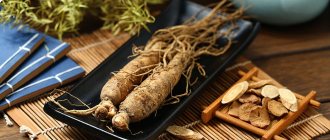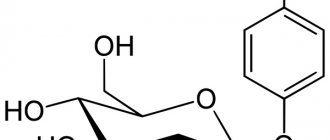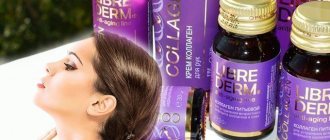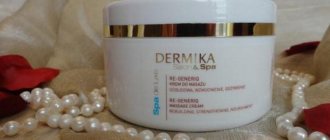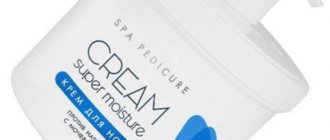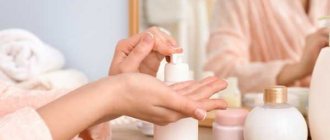general information
Allantoin is used to prepare natural remedies at home: soaps, creams, masks and others. On an industrial scale, the component is used to create various cosmetic products. Recently, the substance has found application in pharmaceuticals.
The product is safe and non-toxic, does not cause allergic reactions and has no odor, which is its undeniable advantage.
Allantoin dissolves in hot water in the shortest possible time.
How is allantoin obtained?
- The natural substance is extracted from plant materials or urea.
- The synthetic component is created using innovative technologies.
The plant substance is more expensive because it has greater benefits compared to the synthetic version, because it also contains other components that have important properties. In addition, allantoin is used externally to heal wounds, ulcers, and skin burns.
Description:
Allantoin is a heterocyclic organic compound produced by animals, bacteria and plants. It is a glyoxylic acid diuretide with the chemical formula C4H6N4O3. It is also called 5-ureidohydantoin or glyoxyl diureid. It is a product of uric acid oxidation and purine metabolism in most mammals, with the exception of higher primates and humans. In humans, uric acid is secreted instead of allantoin. The presence of allantoin in urine may indicate microbial overgrowth. It can be caused non-enzymatically through high levels of reactive oxygen species. In this regard, allantoin is sometimes used as a marker of oxidative stress. Allantoin can be isolated from cow urine or comfrey plant extract. The earliest mentioned topical use of allantoin was in the form of poultices made from comfrey (botanical name Symphytum officinale). The roots and leaves of this perennial herb contain from 0.6 to 1% allantoin; they have been used for a long time in the treatment of wounds and skin ulcers.
Many authors in past centuries have reported the impressive effects of comfrey roots on ulcers and gangrene: Turner in Herbol (1568), John Parkinson (apothecary to King James I) in his Theatrum Botanicum (1640), Tournefort in his Compleat Herbal (1716). In 1790, Wakelin demonstrated the presence of allantoin in the fecal fluids of many animals. Since 1838, allantoin began to be produced synthetically. The use of this ingredient in creams was first mentioned in the 1930s. During the Korean War, it was found that allantoin, found in the secretions of fly larvae infecting the wounds of soldiers, also contributed to their rapid healing.
Allantoin is currently classified by the FDA OTC panel as a skin protectant. It is considered beneficial, especially for people sensitive to topical products, because it forms complexes with various sensitizing agents, making them insensitive. Allantoin helps soothe skin irritation from certain chemicals such as surfactants, preservatives, and acidic or alkaline substances. Allantoin is recognized as a valuable restorative and healing agent that stimulates the formation of healthy tissue. Although the mechanisms of healing action are not yet entirely clear, it is believed that Allantoin causes a local and temporary proliferation of leukocytes. FDA-approved for the treatment of cold sores and fever blisters, Allantoin provides a range of features optimal for reducing outbreak severity and promoting healing.
Application:
Allantoin, a natural compound derived from Symphytum officinale, has long been known for its beneficial effects on the skin. It has keratolytic, keratoplasty, soothing and healing properties, widely used in cosmetic, topical pharmaceutical and veterinary products.
Allantoin is an anti-irritant and non-toxic agent listed in the US Pharmacopoeia, European Pharmacopoeia, Merck Index and British Pharmacopoeia. The FDA recognizes allantoin as an active ingredient in over-the-counter products used to protect human skin. Allantoin helps heal wounds and skin irritations and stimulates the growth of healthy cells. It is found in anti-acne products, tanning creams and lightening lotions because it helps heal minor wounds and promote healthy skin. Allantoin is often present in toothpaste, mouthwash and certain oral hygiene products, as well as other cosmetic and pharmaceutical products. Allantoin is a local therapy intended for the treatment of skin blisters and lesions of various etiologies. It is also thought to work by reducing inflammation, stimulating the body's natural mechanisms to remove damaged tissue and grow new replacement tissue. In addition, allantoin can prevent the growth of bacteria that can infect damaged areas.
Receipt:
The method for producing allantoin consists of a two-stage process by reacting methyl hemiacetal methylglyoxylate with urea in the presence of an inorganic acid at a pH value of 1.0-2.0 and conducting a ring closure reaction at a pH value from 7.0 to 9.0 in the second stage of the reaction.
Effect on the body:
Allantoin works by slowing the growth of bacteria, inactivating and softening scales and crusts. It is a cell-proliferating therapeutic agent that stimulates the formation of healthy tissues. Removes necrotic and scaly tissue.
Allantoin, a nitrogen-rich heterocyclic compound, is found ubiquitously in plants as an intermediate metabolite of purine catabolism. Allantoin and its acyclic metabolite allantoate are collectively called ureides, and in tropical legumes they serve as a xylem storage and transport vehicle for symbiotically fixed nitrogen (Smith and Atkins, 2002). In other plants, purine catabolism is thought to be a major pathway for nitrogen recycling and remobilization because the sequential degradation of the purine ring, which is initiated by xanthine oxidation, occurs through ureide hydrolysis and releases four molar equivalents of ammonia (Zrenner et al., 2006; Werner and Witte, 2011 ). However, traditional metabolite analysis and recent metabolomics studies have shown that allantoin is the major purine metabolite in Arabidopsis (Arabidopsis thaliana), rice (Oryza sativa L.) and other species under various stress conditions such as drought (Oliver et al., 2011; Silvente ). et al., 2011; Yobi et al., 2013), high salinity (Kanani et al., 2010; Wu et al., 2012; Wang et al., 2016), cold (Kaplan et al., 2004), extended darkness (Brychkova et al. , 2008) and pathogen invasion (Montalbini, 1991).
Plants have evolved a complex diversity of metabolic pathways to maintain and enhance growth and survival in their natural environment, including stress conditions. Numerous in vitro and in vivo studies have shown that various small metabolites have specialized functions in cell protection, such as scavenging of reactive oxygen species (ROS), osmoregulation, stabilization of protein structure, and maintenance of membrane integrity (Chen and Murata, 2002). Some minor metabolites also play signaling and regulatory roles in mediating plant responses and adaptation to stress (see, for example, Szabados and Savouré, 2010; Wind et al., 2010; Hussain et al., 2011; Lunn et al., 2014) . However, the physiological function and significance of the accumulation of many stress-related small compounds remains unclear.
Toxicological data:
No repeated dose toxicity or reproductive toxicity studies were presented. Moreover, studies show that cancer in animals treated with allantoin was essentially no different from that of untreated controls. As a result, additional tests for toxicity, mutagenicity or carcinogenicity are not required due to the endogenous nature of allantoin and lack of general toxicity. Finally, since allantoin is a natural component of the human diet and is an endogenous substance present in the human body, it is generally considered safe for human use.
Properties of allantoin
The substance is sold not only as a component of finished cosmetics, but also as a separate component for creating home cosmetic products. Active use is due to the properties of allantoin.
- Dead skin cells are sloughed off. This process prevents clogging of skin pores, the appearance of pimples, and acne.
- Allantoin has antioxidant properties, which makes it possible to use the component for anti-aging cosmetics.
- The substance regenerates cells. In the shortest possible time, the healing process of inflammatory processes occurs, so allantoin is used not only for cosmetic purposes, but also for medicinal purposes.
- Skin condition improves.
- The substance has an antimicrobial, anti-inflammatory effect.
- Allantoin is recommended for dry and sensitive skin. Regular use eliminates inflammation and irritation caused by external factors. The substance increases the protective properties of the skin.
- Allantoin softens the skin and increases the water content in cells. Dryness is eliminated in the shortest possible time.
How do you get it?
Plant sources include comfrey roots, wheat grass, sprouted beans and soybeans, and rice hulls. They have long been used to accelerate the healing of the wound surface and tissue restoration.
The highest content of allantoin is found in the mucus extract of the grape snail and its southern European relative, the species Helix Aspers Muller.
Obtaining the component from natural sources is considered an expensive process, so it is mainly extracted synthetically. It has been established that organic and synthetic analogues are practically no different in their characteristics.
Allantoin for skin
Products with allantoin are recommended for use under negative external conditions, including sudden changes in temperature and strong wind. The substance is used to create products designed to improve the skin, regardless of the person’s age. Newborn babies require allantoin, as the ingredient used in modern care products soothes the skin and eliminates diaper rash.
What tasks does the substance cope with?
- Moisturizing the skin.
- Restoring skin condition after sunburn.
- Elimination of small wrinkles.
- Elimination of inflammatory processes.
- Skin tone.
- Increases skin elasticity and hydration. The feeling of tightness goes away after using soap and products containing alcohol.
Nowadays, allantoin is used not only to treat the skin, but also to treat hemorrhoids, skin diseases, and oral diseases
Links[edit]
- "Allantoin".
- "CAS No. 97-59-6, Allantoin, 5-Ureidohydantoin, Glyoxyl diureid, Glyoxyl diureid, Cordianin, Glyoxyl diureid, (2,5-Dioxo-4-imidazolidinyl)urea".
- Pizzichini, Maria; Pandolfi, Maria Louise; Arezzini, Laura; Terzuoli, Lucia; Fe′, Linda; Bontemps, Francois; Van den Berghe, Georges; Marinello, Enrico (1996-08-09). "Labelling of uric acid and allantoin in various purine organs and rat urine". Life Sciences
.
59
(11):893–899. DOI: 10.1016/0024-3205 (96) 00387-6. PMID 8795700. - Xi, H.; Schneider, B.L.; Reitzer, L. (2000-10-01). "Purine catabolism in Escherichia coli and the function of xanthine dehydrogenase in purine salvage". Journal of Bacteriology
.
182
(19):5332–5341. DOI: 10.1128/jb.182.19.5332-5341.2000. ISSN 0021-9193. PMC 110974. PMID 10986234. - Johnson, Richard J.; Sautin, Yuri Yuryevich.; Oliver, William J.; Roncal, Carlos; Mu, Wei; Gabriela Sanchez-Lozada, L; Rodriguez-Iturbe, Bernardo; Nakagawa, Takahiko; Benner, Stephen A. (01/01/2009). "Lessons in Comparative Physiology: Could Uric Acid Represent a Physiological Alarm Signal That Has Been Wrong in Western Society?" . Journal of Comparative Physiology
B.
179
(1):67–76. DOI: 10.1007/s00360-008-0291-7. ISSN 1432-136X. PMC 2684327. PMID 18649082. - Cm .:
- Bouniwa and Vauquelin (1800) “Sur l'eau de l'amnios de femme et de vache” (On the amniotic fluid of women and cows), Annales de chimie
,
33
: 269-282.
See also: Leopold Gmelin with Henry Watts, trans., Handbook of Chemistry
(London, England: Cavendish Society, 1856), vol. 10, p. 260. - Bouniwa and Vauquelin (1800) “Sur l'eau de l'amnios de femme et de vache” (On the amniotic fluid of women and cows), Annales de chimie
- Lassaigne (1821) "Nouvelles Recherches sur la composition le Fo de l'allantoïde et de l'amnios de la Vache" (new studies on the composition of the allantoin and amniotic fluid of the cow), Annales de Chimie et de physique
, 2nd series ,
17
: 295-305. On pp. 300ff, Lassaigne names and characterizes “l'acide allantoique” (allantic acid). - Cm .:
- Liebig and Wöhler (1837) “Ueber die Natur der Harnsäure” (On the nature of uric acid), Annalen der Physik und Chemie
,
41
(8): 561-569.
Allantoin is named on page 563. From p. 563: “Sie sind
Allantoïssäure
, oder dieselbe Substance, die man in der Allantoïsflussigkeit der Kühe gefunden hat;
wir werden sie von nun an Allantoïn
nennen.”
(They [i.e., the previously isolated crystals] are allantoic acid, or the same substance found in the allantoic fluid of cows; from now on we will call it “allantoin.”)
Reprinted in: F. Wöhler and J. Liebig (1838) "Untersuchungen über die Natur der Harnsäure" (Investigations into the nature of uric acid), Annalen der Pharmacie
,
26
: 241-340. - Liebig and Wöhler (1837) “Ueber die Natur der Harnsäure” (On the nature of uric acid), Annalen der Physik und Chemie
- Young E.G.; Wentworth HP; Hawkins W. W. (1944). "Absorption and excretion of allantoin in mammals". J. Pharmacol. Exp. Ther
.
81
(1): 1–9. - Fujiwara, S; Noguchi T. (1995). "Purine breakdown: only ureidoglycolate lyase is present among four allantoin-degrading enzymes in mammals". Biochemical Journal
.
312
(Pt 1): 315–8. DOI: 10.1042/bj3120315. PMC 1136261. PMID 7492331. - Co., W. C.; Liu, I.M.; Chang, H.H.; Cheng, J. T. (2008). "Activation of I(2)-imidazoline receptors may improve insulin resistance in rats fed a fructose-rich diet." Neuroscience Letters
.
448
(1):90–93. DOI: 10.1016/j.neulet.2008.10.002. PMID 18926881. - Sean Calvert; Robi Takutu; By Sharifi himself; Rute Teixeira; Pratul Ghosh; Joao Pedro de Magalhães (2016). "Network pharmacology approach reveals novel caloric restriction mimetics in C. elegans". Aging cell
.
15
(2): 256–266. DOI: 10.1111/acel.12432. PMC 4783339. PMID 26676933. - Ma, Peaks; Patching, Simon J.; Ivanova, Ekaterina; Baldwin, Jocelyn M.; Sharples, David; Baldwin, Stephen A.; Henderson, Peter J.F. (2016-05-01). "Allantoin transport protein PucI from Bacillus subtilis: evolutionary relationships, enhanced expression, activity and specificity". Microbiology
.
162
(5):823–836. DOI: 10.1099/mic.0.000266. ISSN 1465-2080. PMC 4851255. PMID 26967546. - Goelzer, Anne; Bekkal Brikci, Fadia; Martin-Verstraete, Isabelle; Noirot, Philippe; Bessieres, Philippe; Eymerich, Stefan; Fromion, Vincent (26 February 2008). "Reconstruction and analysis of genetic and metabolic regulatory networks of central metabolism of Bacillus subtilis". BMC Systems Biology
.
2
: 20. DOI: 10.1186/1752-0509-2-20. ISSN 1752-0509. PMC 2311275. PMID 18302748. - Schultz, A.C.; Nygaard, P.; Saksild, H. H. (2001-06-01). "Functional analysis of 14 genes that comprise the purine catabolic pathway in Bacillus subtilis and evidence for a novel regulon controlled by the transcriptional activator PucR". Journal of Bacteriology
.
183
(11):3293–3302. DOI: 10.1128/JB.183.11.3293-3302.2001. ISSN 0021-9193. PMC 99626. PMID 11344136. - Navone, Laura; Casati, Paula; Licona Cassani, Cuauhtemoc; Marcellin, Esteban; Nielsen, Lars K.; Rodriguez, Eduardo; Gramaggio, Hugo (29 November 2013). "Allantoin catabolism affects antibiotic production by Streptomyces coelicolor." Applied Microbiology and Biotechnology
.
98
(1):351–360. DOI: 10.1007/s00253-013-5372-1. ISSN 0175-7598. PMID 24292080. - Search for patent lenses [ permanent dead link
] - Araujo LU, Grabe-Guimarães A, Mosqueira VK, Carneiro SM, Silva-Barcellos NM. (2012-10-22). "Profile of the wound healing process induced by allantoin". Acta Cir Bras
.
25
(5): 460–6. DOI: 10.1590/S0102-86502010000500014. PMID 20877959. - Veraldi, S; De Micheli, P; Schianchi, R; Lunardon, L. (2009). "Treatment of itchy skin in mild to moderate atopic dermatitis with a topical nonsteroidal agent." Journal of Drugs in Dermatology
.
8
(6): 537–9. PMID 19537379. - Thornfeldt, C (2005). "Herbal Cosmeceuticals: Fact, Fiction and the Future." Dermatological surgery
.
31
(7 Pt 2): 873–80. DOI: 10.1111/j.1524-4725.2005.31734. PMID 16029681. - Kand'ár R, Záková P (2008). "Allantoin as a marker of oxidative stress in human erythrocytes". Clinical Chemistry and Laboratory Medicine
.
46
(9):1270–4. DOI: 10.1515/CCLM.2008.244. PMID 18636793. - Zitnanová I, Korytár R, Aruoma OI, Sustrová M, Garaiová I, Muchová J, Kalnovicová T, Pueschel S, Duracková Z (2004). "Uric acid and allantoin levels in Down syndrome: mechanisms of antioxidant and oxidative stress?". Clinica Chimica Acta
.
341
(1–2): 139–46. DOI: 10.1016/j.cccn.2003.11.020. PMID 14967170.
Allantoin for hair
Allantoin is a beneficial substance for hair. What results are achieved with this substance?
- Normalization of the functions of the sebaceous glands, due to which hair grows thickly and actively.
- Dandruff is eliminated in the shortest possible time.
- Dryness is eliminated.
- Hair roots become strong.
- Hair acquires a protective film that guarantees resistance to external factors. This aspect reduces risks from external factors and promotes hair growth.
Creams with allantoin
In what cases are such drugs used?
- The skin is damaged by ultraviolet radiation in the hot summer.
- There is irritation or inflammation of the skin, regardless of the etiology of the process.
- Increasing skin tone, eliminating sagging and fatigue.
- Skin moisturizing.
- There are fine wrinkles. In the early stages of aging and lack of hydration, allantoin is beneficial.
- Manifestation of age-related changes in the skin. For this reason, anti-aging drugs are used and created.
By what principle does allantoin act in cosmetics?
Allantoin has a basic property: the substance participates in the creation of cells, activating their division and reproduction. The component activates regeneration at the cellular level. Beneficial properties appear regardless of how high the concentration of the component is in a cosmetic product or preparation.
Allantoin is an effective drug that is a component of cosmetic products (creams, emulsions, serums). The substance not only has no toxicity or risk of allergies, but also has a positive effect on the human body, ensuring the elimination of skin problems and rapid recovery.
Contraindications
Allantoin is considered a harmless element. If the product contains no more than 2% of this component, you don’t have to worry about the condition of your skin. The only danger is considered to be an allergy to the active substance. Therefore, those with sensitive skin can use the product only after consultation with a dermatologist. Before you start using the substance, you must do an allergy test.
Allantoin can be used exclusively locally. Taking this composition internally is strictly prohibited. This method will not benefit the skin and can cause dangerous health consequences. Cosmetics with this substance can be used even during pregnancy and lactation. However, you must strictly follow the instructions.
Allantoin is an effective product that is actively used in the manufacture of cosmetic products. The substance brings great benefits to the skin and hair and causes virtually no unwanted reactions. If side effects do occur, you should stop using the product and consult your doctor.
Recipes with allantoin
Skin healing cream
To prepare the cream, take:
- 33 milliliters of lavender hydrosol;
- 5 grams of shea butter;
- 3 grams of emulsifying wax;
- 4 milliliters macadamia;
- 5 milliliters – calendula;
- 20 drops of natural lavender extract;
- 0.5 grams of allantoin (one of the main substances that guarantee the benefits of the product);
- 5 drops of vitamin E;
- 12 drops grapefruit extract.
The cosmetic product will moisturize the skin, eliminate inflammatory processes, and give it a velvety feel. An emulsion at room temperature, to which you need to add vitamin E, as well as grapefruit seed extract, will become effective. The preparation process is traditional, and the result is an emulsion of consistency that is easy to use.
Lip balm
To prepare the balm, use seven milliliters of shea butter, one gram of beeswax, three milliliters of natural coconut oil, 0.2 grams of allantoin. First, melt the components, and then mix thoroughly so that they combine and come into contact with each other. The mixture should cool, after which add allantoin and mix again. The components must freeze.
Using allantoin in cosmetics, you will notice the benefits of the natural substance. Regular use is the basis for obtaining high-quality results.
Where is it used?
Many healing properties allow allantoin molecules to be used in a variety of skin care products for the whole body. Some are aimed at softening the skin and narrowing pores, while others are aimed at restoring weathered or sunburned epithelium.
Thanks to its multicomponent composition, allantoin is added to creams, hair shampoos, antiperspirants, and deodorants. Its presence in the last two agents reduces the vital activity of bacterial cells due to antimicrobial activity.
The presence of anti-inflammatory properties, enhancement of metabolic processes and acceleration of cell regeneration allows the use of this substance as part of medicinal ointments for the treatment and prevention of diseases of the peripheral blood vessels.
